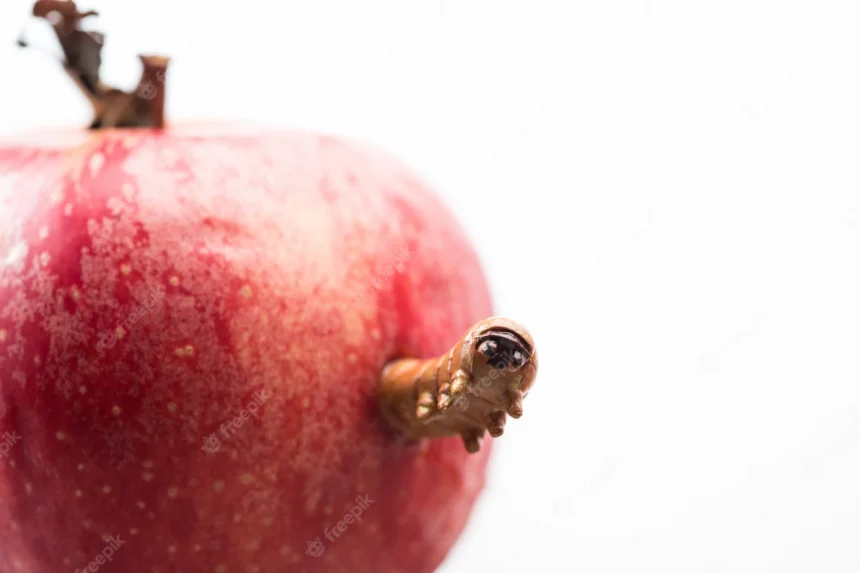Apple maggot, also known as Rhagoletis pomonella, is a common pest that affects apple trees and can cause significant damage to the fruit. Here are some symptoms to look out for in apples that may indicate an infestation of apple maggot:
- Oviposition scars: Female apple maggots lay eggs just beneath the apple skin. These eggs hatch into larvae, which tunnel through the flesh of the fruit, leaving small puncture wounds or oviposition scars. These scars are usually small, circular, and brownish in color.
- “Railroad tracks”: As the apple maggot larvae feed on the fruit flesh, they create winding tunnels or channels called “railroad tracks.” These tracks are brownish in color and can be seen when you cut open the affected apple.
- Discoloration and browning: Infested apples may show signs of discoloration or browning in the flesh surrounding the tunnels created by the apple maggots. This discoloration is often more pronounced as the infestation progresses.
- Premature fruit drop: In severe infestations, the damaged apples may prematurely drop from the tree. This can occur before the fruit is fully ripe or even before it reaches its normal size.
- Increased susceptibility to rot: Apple maggot infestations can weaken the fruit’s natural defenses, making it more susceptible to rot caused by fungi or bacteria. If you notice an increased incidence of rotting or moldy apples, it could be a sign of an apple maggot infestation.
It’s important to note that the symptoms mentioned above can also be caused by other pests or diseases. To confirm an apple maggot infestation, it’s recommended to consult with a local agricultural extension service or a professional horticulturist who can provide accurate identification and treatment recommendations based on your specific location and circumstances.
Join 'Farmers Mag' WhatsApp Channel
Get the latest Farming news and tips delivered straight to your WhatsApp
CLICK HERE TO JOIN






